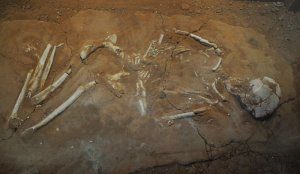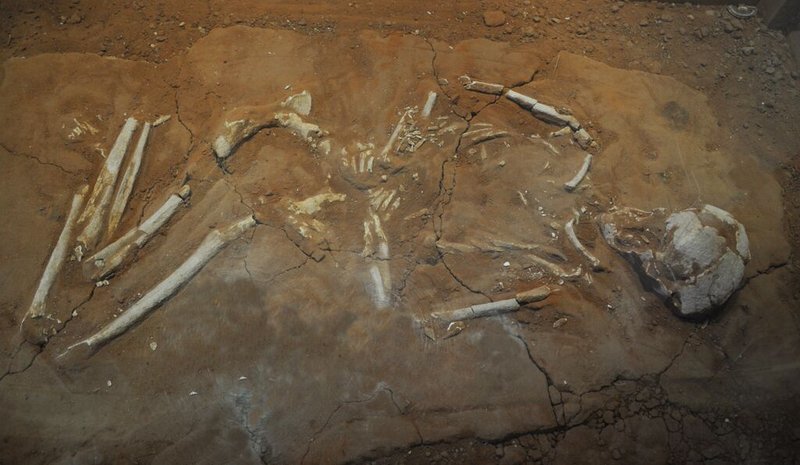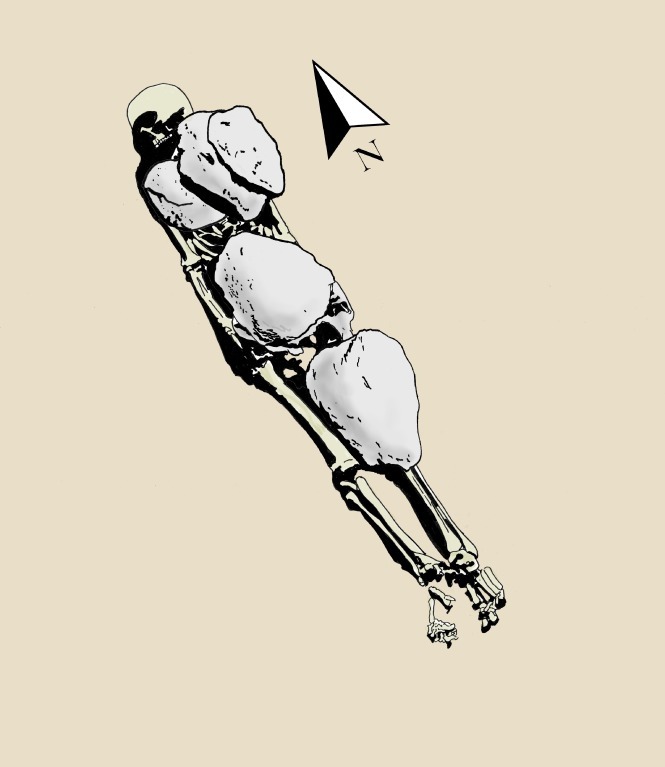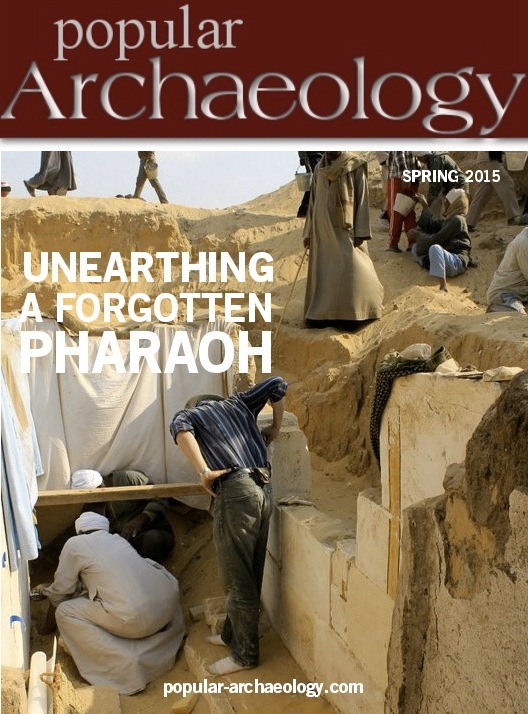
In an article recently published in Popular Archaeology Magazine, University of Pittsburgh Postdoctoral Fellow and writer Carrie Sulosky Weaver examines and summarizes the evidence in the archaeological and historical record that supports the suggestion that the ancient Greeks believed in the ‘undead’, or ‘revenants’, individuals who could emerge from a state of death to something that was neither living nor dead—leaving their graves at night to harm the living.
As one case in point, she elaborates on finds unearthed in a cemetery located near the ancient coastal Greek town of Kamarina in southeastern Sicily. Known as Passo Marinaro, this cemetery served as a Classical period necropolis in use from the 5th through 3rd centuries BCE. Approximately 2,905 burials have been excavated by archaeologists at the site, more than half of which contained grave goods, such as terracotta vases, figurines, and metal coins.
______________________________________
 Typical flexed burial from Passo Marinaro. Photo by Carrie L. Sulosky Weaver, courtesy of the Regional Museum of Kamarina.
Typical flexed burial from Passo Marinaro. Photo by Carrie L. Sulosky Weaver, courtesy of the Regional Museum of Kamarina.
____________________________________________________
But two of the burials were unique. The first, designated tomb 653, contained an individual who, although of unknown gender, apparently suffered from serious malnutrition and illness in life. But “what is unusual about Tomb 653 is that the head and feet of the individual are completely covered by large amphora fragments,” states Weaver. “The heavy amphora fragments found in Tomb 653 were presumably intended to pin the individual to the grave and prevent it from seeing or rising.” The second burial, designated tomb 693, contained the remains of a child about 8 to 13 years old. Also of indeterminate gender, this individual was buried with five large stones placed on top of the body. “Like the aforementioned amphora fragments,” states Weaver, “it appears that these stones were used to trap the body in its grave.”*
_______________________________________
 Drawing of the burial in Tomb 693. Drawing by D. Weiss from G. Di Stefano’s excavation journals.
Drawing of the burial in Tomb 693. Drawing by D. Weiss from G. Di Stefano’s excavation journals.
______________________________________________________
Weaver draws upon ancient documentary and other archaeological records throughout the Mediterranean world from the Neolithic through the 19th century CE that tend to lend support to the Kamarina burials as possible ‘revenants’.
“Although there are no clear indicators in either the burial contexts or the skeletal remains that would explain why the occupants of Kamarinean Tombs 653 and 693 were pinned in their graves, their special treatment suggests that necrophobic beliefs and practices were present in Greek Sicily,” she concludes about the burials. “However, our understanding of these traditions is tenuous and more questions than answers remain. It is hoped that the careful examination of future cases will shed light on this unusual custom and provide us with a more complete picture of necrophobia [the irrational fear of the dead and things associated with death] in the ancient Greek world.”*
The detailed article by Weaver is published in the Summer 2015 issue of Popular Archaeology Magazine.
________________________________________________
*Weaver, Carrie L. Sulosky, Walking Dead and Vengeful Spirits, Popular Archaeology Magazine, Vol. 19, Summer 2015.
________________________________________________
 Read more in-depth articles about archaeology with a premium subscription to Popular Archaeology Magazine.
Read more in-depth articles about archaeology with a premium subscription to Popular Archaeology Magazine.
In addition, the latest Popular Archaeology ebook is now available.
______________________________________________
Travel and learn with Far Horizons.
____________________________________________
 Popular Archaeology’s annual Discovery Edition eBook is a selection of the best stories published in Popular Archaeology Magazine in past issues, with an emphasis on some of the most significant, groundbreaking, or fascinating discoveries in the fields of archaeology and paleoanthropology and related fields. At least some of the articles have been updated or revised specifically for the Discovery edition. We can confidently say that there is no other single issue of an archaeology-related magazine, paper print or online, that contains as much major feature article content as this one. The latest issue, volume 2, has just been released. Go to the Discovery edition page for more information.
Popular Archaeology’s annual Discovery Edition eBook is a selection of the best stories published in Popular Archaeology Magazine in past issues, with an emphasis on some of the most significant, groundbreaking, or fascinating discoveries in the fields of archaeology and paleoanthropology and related fields. At least some of the articles have been updated or revised specifically for the Discovery edition. We can confidently say that there is no other single issue of an archaeology-related magazine, paper print or online, that contains as much major feature article content as this one. The latest issue, volume 2, has just been released. Go to the Discovery edition page for more information.
____________________________________________






